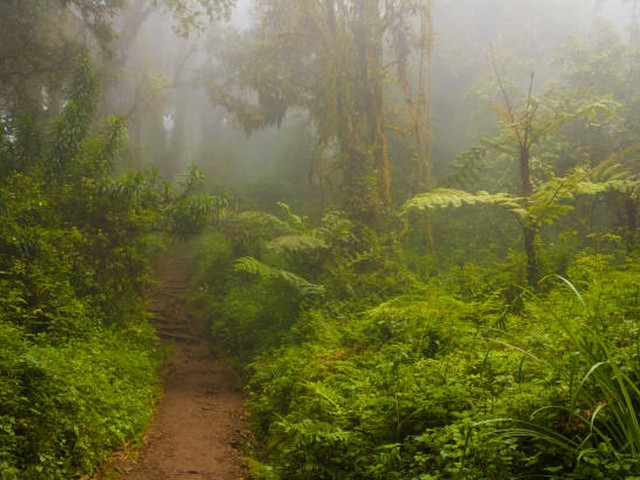Ascending the Roof of Africa: Essential Kilimanjaro Trekking Gear for High-altitude Hikes
As you set your sights on the majestic summit of Mount Kilimanjaro, preparing for the journey ahead goes beyond physical training and mental readiness. One of the key aspects that can make or break your high-altitude adventure is choosing the right Kilimanjaro trekking gear. Whether you’re a seasoned mountaineer or a first-time trekker, the gear you carry is your lifeline in the extreme conditions of Africa’s highest peak.
At Kilimanjaro Centre for Trekking and Ecotourism (KCTE), we understand that gearing up for such an expedition can be daunting. That’s why we’ve compiled this comprehensive guide to help you navigate through the essentials needed for a successful and enjoyable climb. So, lace up your boots, and let’s gear up for an unforgettable journey!
Understanding the Climate of Kilimanjaro
Before diving into the gear specifics, it’s crucial to understand the unique climate conditions of Mount Kilimanjaro. The mountain’s vast height means trekkers will experience multiple climatic zones – from the warm tropics to icy polar conditions. This variability requires gear that can handle a wide range of temperatures and weather conditions.
The Ultimate Kilimanjaro Trekking Gear List
H2: Technical Clothing: Layering Up for Success
The key to staying comfortable on Kilimanjaro is layering. Your clothing should handle the diverse climates, from the steamy rainforest base to the icy summit.
- Base Layer: Opt for moisture-wicking materials that keep you dry and comfortable. Think synthetic or merino wool fabrics that provide warmth even when wet.
- Insulation Layer: A fleece or down jacket will be crucial as you ascend to colder altitudes. It traps heat and provides essential warmth during chilly mornings and evenings.
- Outer Layer: A waterproof and windproof jacket and pants are non-negotiable. They will protect against wind and precipitation, particularly in the rainforest and moorland zones.
H2: Footwear: Foundation for Each Step
Your boots are perhaps the most critical piece of your Kilimanjaro trekking gear. Choose waterproof, high-ankle hiking boots with good insulation and support. Breaking them in well before the trek is essential to avoid blisters and discomfort.
H2: Headgear and Handwear: Protecting the Extremities
- Headgear: A warm beanie or headband, a sunhat for daytime, and a balaclava for summit night are all essential. They provide protection from the sun and severe cold.
- Gloves: Pack insulated gloves for warmth and lighter fleece gloves for milder conditions. Consider glove liners for added warmth and versatility.
H2: Backpack and Sleeping Gear
- Backpack: A sturdy, comfortable backpack (30-40 liters) with multiple compartments and a rain cover is ideal.
- Sleeping Bag: Choose a sleeping bag rated for at least -10 degrees Celsius. A sleeping bag liner can also add an extra layer of warmth.
H2: Navigational Tools and Health Supplies
- Navigational Aids: While a guide will lead your path, having a map, compass, or GPS can be beneficial for personal knowledge and safety.
- Health Supplies: Prepare a first-aid kit with essentials like bandages, antiseptic, blister treatments, and medications. High-altitude sickness pills and water purification tablets are also crucial.
Staying Hydrated and Energized: Nutrition and Hydration Gear
- Water Bottles/Bladder: Keeping hydrated is critical. Insulated water bottles or a hydration bladder system are recommended to prevent freezing at high altitudes.
- Energy Foods: High-energy snacks like nuts, chocolate, and energy bars will keep you fueled throughout your climb.
The Importance of Trekking Poles and Headlamps
- Trekking Poles: These are invaluable for reducing the impact on knees and improving balance in challenging terrains.
- Headlamp: Essential for early morning or night treks, especially during the summit bid. Ensure it’s powerful and has extra batteries.
Environmentally Friendly Gear: Keeping Kilimanjaro Pristine
At KCTE, we advocate for the use of eco-friendly and sustainable trekking gear. Choosing biodegradable products and minimizing plastic waste are steps we can all take to preserve the beauty of Kilimanjaro.
FAQs: Preparing for Your Kilimanjaro Trek
What is the best time of year to climb Kilimanjaro?
The best times are during the dry seasons: January to mid-March and June to October.
How fit do I need to be to climb Kilimanjaro?
You need a reasonable level of fitness, as the trek involves multiple days of walking at high altitudes. Preparing with cardiovascular and strength training is recommended.
Can I rent gear locally?
Yes, at KCTE, we offer rental options for major trekking gear. However, personal items like boots and base layers should be fitted and broken in before your trek.
Ready to Conquer Kilimanjaro?
Equipped with the right gear and knowledge, you’re now ready to take on the challenge of Mount Kilimanjaro. Remember, while having the correct gear is crucial, the right attitude and determination are just as important.
Are you inspired to embark on this life-changing adventure? Book your Kilimanjaro climb with Kilimanjaro Centre for Trekking and Ecotourism (KCTE) today and experience the majestic beauty of the Roof of Africa. Our experienced guides, comprehensive gear rentals, and commitment to eco-friendly practices ensure you have the adventure of a lifetime. Join us and step into the heart of Tanzania’s wilderness, geared up for success!




